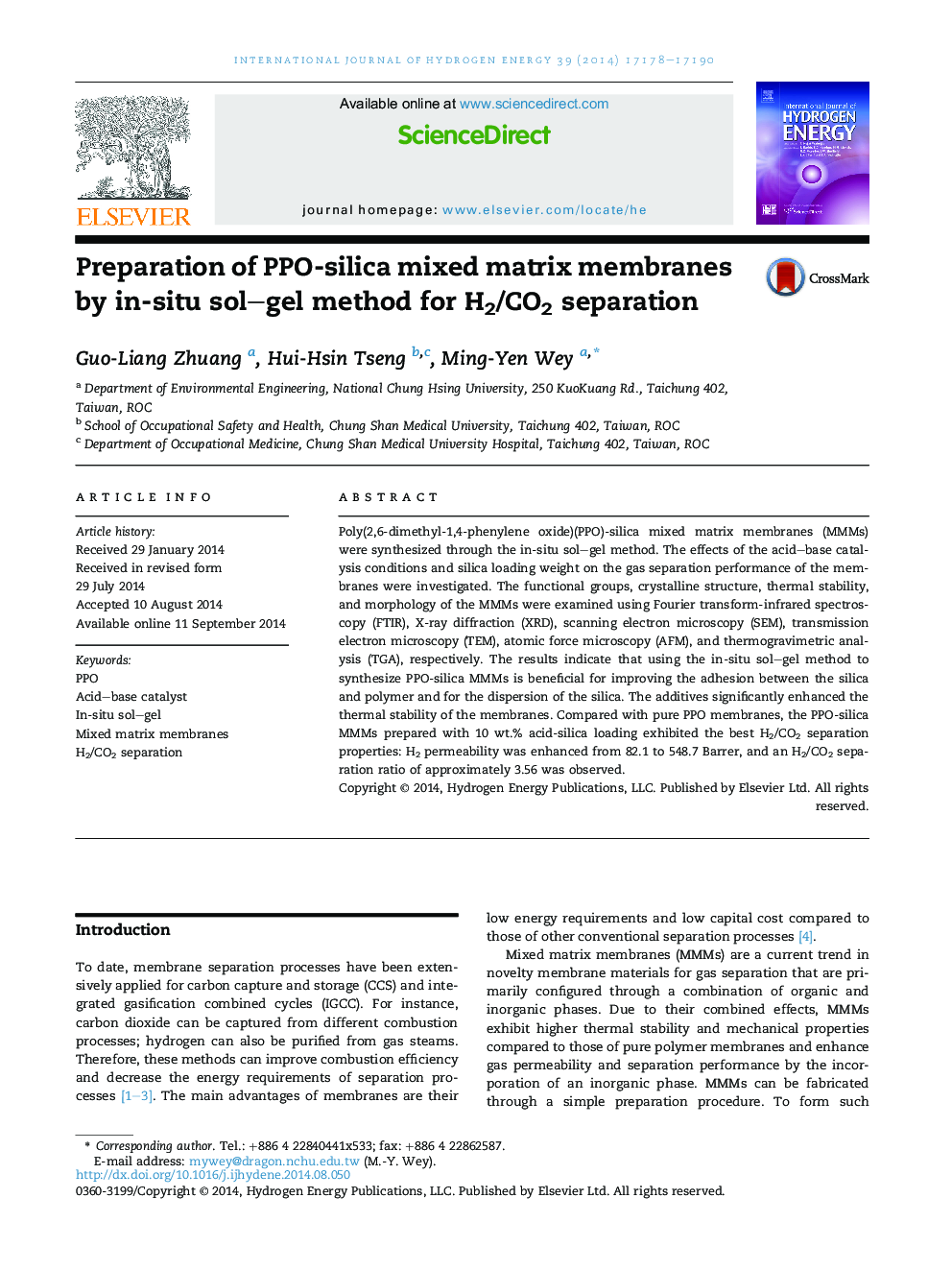| Article ID | Journal | Published Year | Pages | File Type |
|---|---|---|---|---|
| 1272173 | International Journal of Hydrogen Energy | 2014 | 13 Pages |
•Non-defect PPO-silica MMMs were successfully prepared by the in-situ method.•Silica exhibited a good interaction with PPO.•Acid-catalyzed silica significantly improved the gas separation performance of MMMs.•The obtained membranes demonstrated high H2 permeability and H2/CO2 selectivity.
Poly(2,6-dimethyl-1,4-phenylene oxide)(PPO)-silica mixed matrix membranes (MMMs) were synthesized through the in-situ sol–gel method. The effects of the acid–base catalysis conditions and silica loading weight on the gas separation performance of the membranes were investigated. The functional groups, crystalline structure, thermal stability, and morphology of the MMMs were examined using Fourier transform-infrared spectroscopy (FTIR), X-ray diffraction (XRD), scanning electron microscopy (SEM), transmission electron microscopy (TEM), atomic force microscopy (AFM), and thermogravimetric analysis (TGA), respectively. The results indicate that using the in-situ sol–gel method to synthesize PPO-silica MMMs is beneficial for improving the adhesion between the silica and polymer and for the dispersion of the silica. The additives significantly enhanced the thermal stability of the membranes. Compared with pure PPO membranes, the PPO-silica MMMs prepared with 10 wt.% acid-silica loading exhibited the best H2/CO2 separation properties: H2 permeability was enhanced from 82.1 to 548.7 Barrer, and an H2/CO2 separation ratio of approximately 3.56 was observed.
